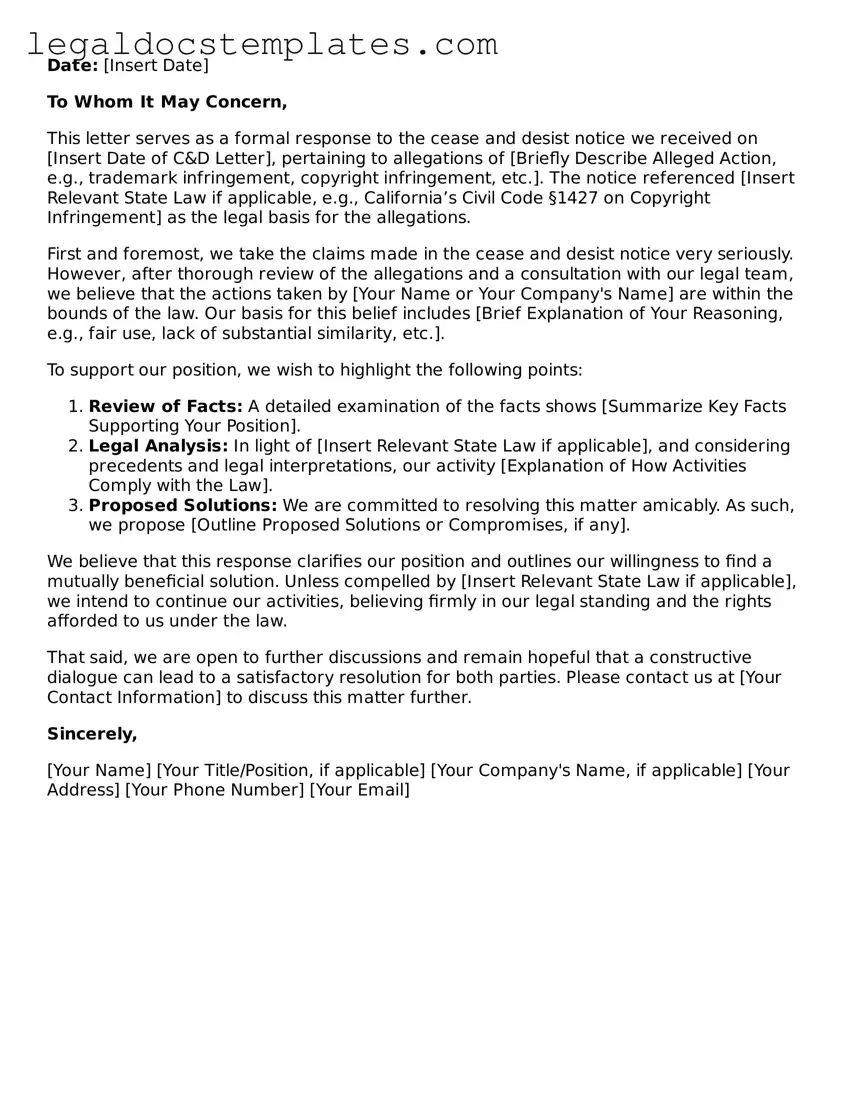What is a Response to a Cease and Desist Letter?
A Response to a Cease and Desist Letter is a formal reply to a cease and desist letter you've received. It outlines your stance regarding the allegations made against you, clarifies any misunderstandings, asserts your legal rights, and possibly proposes a resolution to avoid further legal action.
Why do I need to respond to a Cease and Desist Letter?
Responding to a cease and desist letter is crucial because it allows you to:
-
Clarify your position
-
Challenge any unfounded or incorrect allegations
-
Avoid potential legal action by addressing the issue
-
Open a dialogue for negotiation and settlement
Ignoring the letter may lead to legal action being taken against you, which could have been avoided with a timely and well-crafted response.
What should be included in my response to a Cease and Desist Letter?
Your response should include:
-
A clear statement about whether you agree or disagree with the claims made in the letter
-
Any evidence that supports your position
-
A detailed explanation of your stance
-
How you wish to resolve the situation, whether by ceasing the disputed activity, negotiating a settlement, or defending your actions if the matter escalates to court
-
Your contact information for further correspondence
It's important to be clear and concise while providing enough detail to support your case.
How do I send my response?
Your response should be sent through a method that provides proof of delivery, such as certified mail, fax with a confirmation, or email with a read receipt. This ensures there's a record of your response being sent and received.
Do I need a lawyer to respond to a Cease and Desist Letter?
While it is not mandatory to hire a lawyer to respond to a cease and desist letter, consulting with one can be very beneficial. A lawyer can help you understand the legal implications of the allegations made against you, advise on the best course of action, and draft a professional and effective response. In complex cases or cases with high stakes, seeking legal advice is highly recommended.
Can responding to the letter adversely affect me?
Provided you handle your response carefully, responding to a cease and desist letter should not adversely affect you. In fact, it often plays a crucial role in preventing the situation from escalating. However, admissions of wrongdoing, agreeing to unreasonable demands without negotiation, or providing too much unnecessary information can be detrimental. Therefore, it's crucial to strike a balance between defending your position and not incriminating yourself or agreeing to unfavorable terms.
What if the demands in the Cease and Desist Letter are unreasonable?
If the demands are unreasonable or based on incorrect information, your response should calmly and clearly articulate why you believe this to be the case, providing any relevant details or evidence to support your position. You can also propose a more reasonable resolution to the issue. Negotiation is often key to finding a resolution that both parties can accept, potentially avoiding further legal action.
